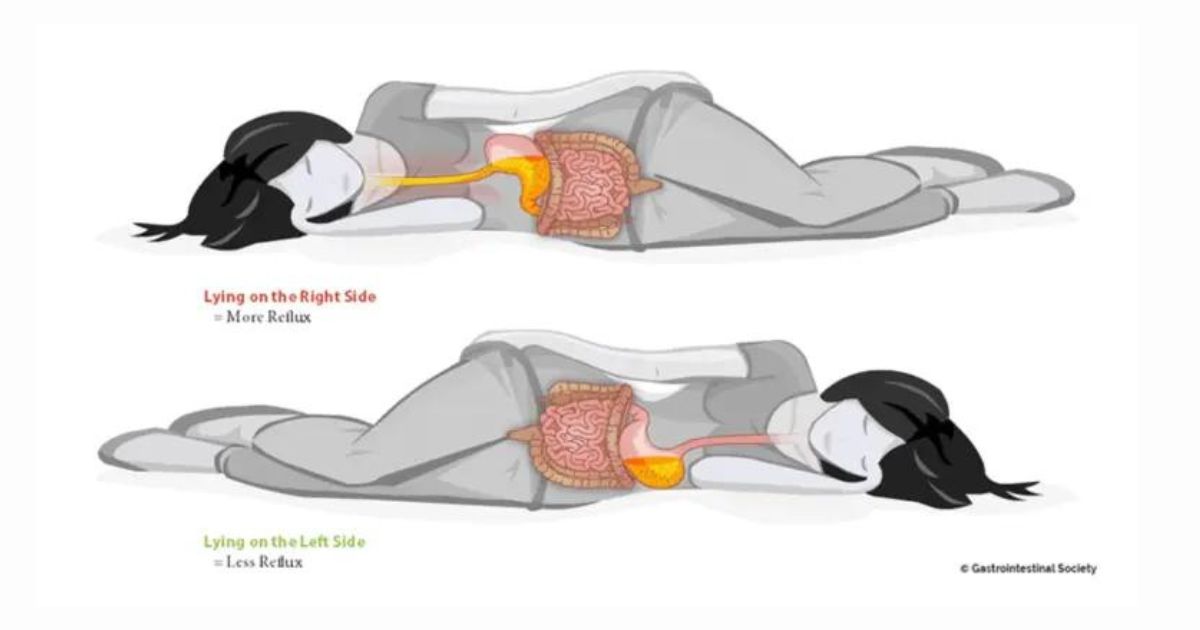Is indigestion wreaking havoc on your peaceful night’s sleep? Discover the expert-recommended best sleeping position for indigestion that can significantly alleviate reflux and digestive discomfort.
In this comprehensive report, we delve into the insights provided by the Canadian Society of Intestinal Research and explore practical tips to enhance your sleep quality during the holiday season and beyond. Is indigestion
As the holiday festivities bring joy, they also usher in digestive challenges. From indigestion to heartburn, the Canadian Society of Intestinal Research sheds light on the common gastrointestinal issues many face during the holiday season.
Erin Judge, a registered dietitian nutritionist and founder of Gutivate, emphasizes the impact of disrupted routines on digestive health, attributing symptoms to changes in bowel motility.
Best Sleeping Position for Indigestion, According To Experts
Gastroesophageal reflux disease (GERD) takes center stage as a culprit behind post-feast indigestion. GERD, characterized by the backward flow of stomach contents into the esophagus, often leads to heartburn, especially after meals and during sleep.
The Canadian Society of Intestinal Research underscores the role of gravity in preventing stomach acid from ascending into the esophagus and explains why reflux intensifies during lying down.
Enter the game-changer – sleeping on your left side. According to the Canadian Society of Intestinal Research, this simple adjustment can significantly reduce reflux. The anatomy of the stomach, predominantly located on the left side of the upper abdomen, plays a pivotal role. Sleeping on the left side positions the stomach below the esophagus, creating a natural barrier against the rise of stomach acid.
Scientific research supports the efficacy of left-side sleeping for chronic heartburn sufferers. Studies reveal that stomach acid clears more rapidly when individuals adopt a left-side sleeping position, outperforming the outcomes of back or right-side sleeping.
The implications are profound – a small change in sleep posture can lead to substantial relief from nocturnal reflux.
If the left side isn’t your preferred sleeping position, fear not. Our experts recommend elevating your head and torso 6 to 8 inches above the bed. Insights from the Canadian Society of Intestinal Research caution against elevating only your head, emphasizing the importance of a diagonal incline to prevent back or neck pain. A wedge pillow emerges as a practical solution to achieve the desired elevation and enhance your sleeping experience.
While optimizing your sleep posture is a game-changer, it may not be a one-size-fits-all solution. Our report explores cautionary measures, such as the potential pitfalls of elevating only your head. We emphasize the importance of a holistic approach, considering factors beyond sleep position.
For those seeking alternatives, a simple stomach massage is suggested as a potential remedy to complement changes in sleeping arrangements.
In conclusion, the quest for a good night’s sleep amidst indigestion woes finds a valuable ally in adjusting your sleeping position. The left-side advantage, supported by scientific findings, provides a practical and effective solution for those grappling with GERD symptoms.
As we navigate the holiday season and its culinary delights, optimizing sleep posture emerges as a proactive step towards digestive relief, ensuring restful nights for a healthier, happier you.








Leave a Reply
You must be logged in to post a comment.